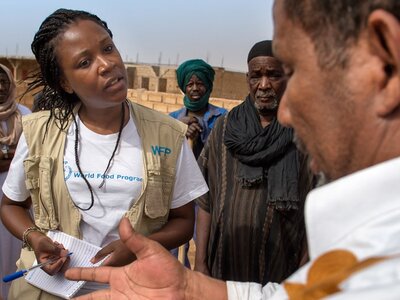As the World Food Programme (WFP) increasingly engages in national capacity strengthening through Country Strategic Planning, capacity assessment has become a critical function.
What does each nation want? Where does it go for support in its quest for Zero Hunger? How can WFP help governments identify areas in need of attention – then set about strengthening those areas, helping to relieve constraints, smoothing out bottlenecks?
One country’s baseline is different from the next one’s. Priorities differ. In one place, reducing stunting may be of crucial import; in another, the ability to manage natural resources; in another, the ability to manage natural resources; in another yet, creating nutritional information systems that are effective and sustainable. When it comes to ending hunger, WFP is there to support governments’ solutions.
Capacity assessment takes place under Sustainable Development Goal 2 of the 2030 Development Agenda, but also under Goal 17 , which sets out the principle of broad partnerships to foster progress on all fronts. The umbrella of Goal 17 also allows for assistance to governments in areas less explicitly associated with ending hunger, but often essential in creating an enabling environment – the transfer of analytical skills, infrastructural support or data management systems.
A collaborative process, a country capacity assessment will be initiated by a national government, but fan out to embrace a variety of local stakeholders, from civil society to humanitarian and development partners. WFP can actively facilitate this process – even as governments, ultimately responsible for delivering the 2030 Agenda, remain in charge. With WFP facilitating the process as and where appropriate, national actors identify the domains where assistance is required.
WFP encourages assessment of capacities along five “pathways”:
- Policy and legislative
- Institutional effectiveness and accountability
- Strategic planning and financing
- Programme design and delivery
- Engagement of non-government actors
- Assessments take place at what is jointly identified as the most appropriate level – whether the central government or decentralized entities, local authority or community structures.
Any policy and/or programmatic responses will be formulated at those same levels – and aligned with the WFP Country Strategic Plan.

